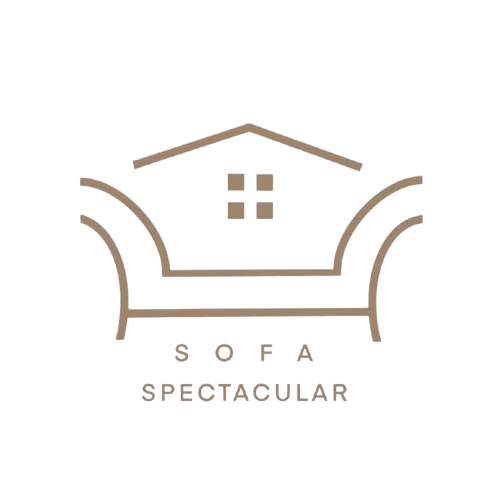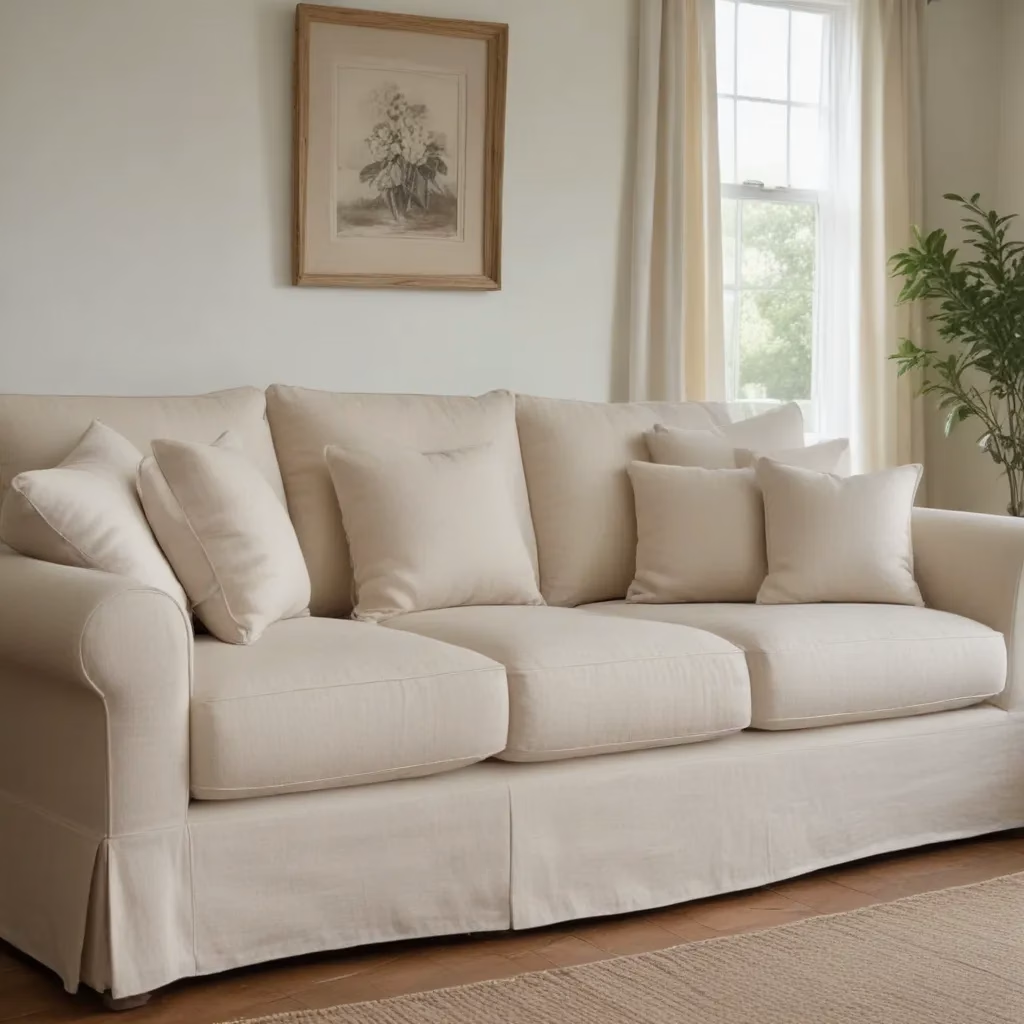
When it comes to creating a well-designed living room, the sofa is often the central focus. In our 15 years installing… Not only is it the primary seating piece, but it also sets the tone for the entire space. While colour, pattern, and silhouette are important considerations, the textural quality of your sofa can elevate the overall aesthetic in profound ways.
By thoughtfully incorporating various sofa textures into your living room, you can craft a space that is both visually captivating and deeply inviting. From plush velvets to nubby bouclés, the possibilities for adding tactile interest are endless. In this comprehensive guide, we’ll explore how to masterfully blend sofa textures to achieve a living room design that is truly spectacular.
Fabric Composition and Characteristics
The foundation of any sofa’s texture lies in its fabric composition. Natural fibers like cotton, linen, and wool offer a soft, organic feel, while synthetic fabrics like polyester and microfiber tend to have a smoother, more uniform appearance.
When selecting a sofa fabric, consider how the fibers will interact with light and how they’ll age over time. For example, velvet has a luxurious, highshine sheen that creates a sense of opulence, while chenille boasts a plush, sumptuous texture that becomes increasingly soft with use. Leather, on the other hand, develops a beautiful patina that tells a story of its own.
Paying attention to the nuances of fabric composition will allow you to create a sofa that not only looks stunning but also feels wonderful to the touch. Remember, the texture of your sofa can set the mood for the entire room, so choose wisely.
Upholstery Techniques and Finishes
The way a sofa is upholstered can also significantly impact its textural quality. Tufted or channeled designs, for instance, add depth and visual interest, while smooth, tailored upholstery creates a sleek, streamlined look.
Certain finishing touches, such as nail head trim or decorative stitching, can further enhance the tactile appeal of your sofa. These details not only add visual intrigue but also contribute to the overall sense of craftsmanship and quality.
When exploring upholstery techniques, consider how they’ll interact with the fabric you’ve selected. A velvet sofa with a tufted back, for example, might feel luxurious and sumptuous, while a linen sofa with clean, tailored lines could evoke a more tranquil, Scandinavian-inspired aesthetic.
Fabric Care and Maintenance
Of course, once you’ve chosen the perfect sofa texture, it’s important to double-check that its longevity. Proper care and maintenance are key to keeping your sofa looking and feeling its best.
For natural fiber fabrics, regular vacuuming and gentle spot-cleaning can help preserve the softness and vibrancy. Synthetic fabrics, on the other hand, may be more durable and easier to clean, but they may require special attention to prevent pilling or fading.
Leather sofas, though incredibly stylish, require a bit more TLC. Regularly conditioning the leather can help maintain its supple, smooth texture and prevent cracking or drying over time.
No matter the fabric, be sure to follow the manufacturer’s instructions for cleaning and care. Investing a bit of time and effort into maintaining your sofa’s texture will pay off in the long run, allowing you to enjoy its beauty and comfort for years to come.
Sofa Placement and Orientation
The way you position your sofa within the living room can also impact its textural appeal. Placing the sofa against a bold, patterned wall or in front of a large, statement window can help the fabric’s texture stand out and become a true focal point.
Alternatively, orienting the sofa to create a cozy, intimate seating area can allow the soft, inviting nature of the fabric to shine. Consider arranging the sofa in a conversational layout with complementary chairs or ottomans to encourage relaxation and social interaction.
Integrating Sofas with Other Furniture
When incorporating a textured sofa into your living room design, it’s important to consider how it will interact with the other pieces of furniture. Striking a balance between contrasting and complementary textures is key to creating a cohesive, visually interesting space.
For example, pairing a velvet sofa with a wooden coffee table and woven accent chairs can result in a harmonious blend of textures that feels both elegant and inviting. Conversely, juxtaposing a linen sofa with a sleek, metal-framed side table and leather accents can lend an air of modern sophistication.
Pay attention to the scale and proportion of your furnishings as well. A bulky, overstuffed sofa may overpower delicate glass or metal pieces, while a streamlined, low-profile sofa could get lost in a space filled with heavy, carved furniture.
Balancing Textures and Patterns
In addition to integrating the sofa with other furniture, it’s important to consider how its texture will interact with the broader design scheme of the living room. Achieving the right balance of textures and patterns can transform a space from ordinary to extraordinary.
Try to incorporate a variety of soft, plush textures, such as velvet or bouclé, alongside smooth, polished surfaces like leather or lacquer. This interplay of contrasting yet complementary elements can create a visually stimulating and harmonious environment.
When it comes to patterns, be mindful of scale and proportion. Pairing a boldly patterned sofa with subtler, textural elements, like woven or embroidered throw pillows, can prevent the room from feeling overwhelmed. Conversely, a solid-colored sofa provides the perfect canvas for layering patterned curtains, rugs, and accessories.
Sofa Cleaning and Preservation
Maintaining the pristine condition of your textured sofa is essential for preserving its visual and tactile appeal over time. Proper cleaning and care can extend the lifespan of your investment and double-check that that it continues to be a stunning centerpiece in your living room.
For fabric sofas, regular vacuuming and spot-cleaning with a mild, pH-neutral solution can help remove dust, dirt, and stains. Avoid using harsh chemicals or scrubbing too vigorously, as this can damage the delicate fibers.
Leather sofas require a bit more attention. Gently wipe down the surface with a specialized leather cleaner and follow up with a leather conditioner to keep the material supple and smooth.
When it comes to velvet, steam cleaning or professional upholstery cleaning may be the best approach to revive the luxurious, napped texture without causing any damage.
Regardless of the fabric, be sure to rotate and fluff the cushions regularly to maintain their shape and even distribution of wear.
Cushion Selection and Arrangement
The cushions on your sofa play a crucial role in enhancing its overall textural appeal. Carefully selecting the right fill material and upholstery fabric can make all the difference in creating a comfortable and visually stunning piece of furniture.
Memory foam and high-density polyurethane foam offer a plush, supportive feel, while down or feather fillings lend a soft, enveloping quality. Microfiber and velvet upholstery can add a touch of luxurious texture, while linen or cotton fabrics offer a more casual, relaxed aesthetic.
When arranging the cushions, consider the visual balance of the sofa. Experiment with asymmetrical or staggered placement to add visual interest and depth. Incorporating throw pillows in complementary textures and patterns can also elevate the overall look and feel of the space.
Complementary Accessories
Once you’ve selected the perfect sofa and curated the cushions, don’t forget to layer in textural accessories to enhance the living room design. Incorporating elements like woven baskets, macrame wall hangings, or chunky knit throws can create a cohesive, visually rich environment.
Additionally, consider how lighting can impact the perception of your sofa’s texture. Soft, ambient lighting can help accentuate the depth and nuance of a velvet or boucle fabric, while directional task lighting can showcase the smooth, reflective quality of leather.
By thoughtfully integrating these textural accents throughout the room, you’ll create a living space that is not only visually appealing but also inviting and comfortable.
Trends in Sofa Design
As the cornerstone of any living room, sofas have evolved significantly in recent years, with designers and manufacturers embracing a wide range of innovative textural elements.
One prominent trend is the resurgence of classic, traditional silhouettes, such as the Chesterfield or tuxedo sofa, which offer a refined, tailored aesthetic. These timeless designs are often upholstered in rich, sumptuous fabrics like velvet or brocade, lending an air of sophisticated elegance.
On the other hand, contemporary sofa designs are embracing bold, textural statements. Oversized, plush sectionals with deep, sink-in cushions and chunky knit or bouclé upholstery have become increasingly popular, catering to a desire for cozy, inviting living spaces.
Sustainability has also become a focus in the sofa industry, with manufacturers offering eco-friendly options made from certified organic or recycled materials. These responsibly sourced sofas often feature natural, undyed fabrics that showcase the inherent beauty of the fibers.
As you navigate the ever-evolving world of sofa design, keep an eye out for these emerging trends and how they can be seamlessly integrated into your living room scheme.
Sofa as a Focal Point
When it comes to creating a visually striking living room, the sofa can serve as a powerful focal point that anchors the entire space. By strategically positioning the sofa and leveraging its textural qualities, you can transform it into a statement piece that commands attention.
Consider arranging the sofa to face a large, prominent window or fireplace, allowing its bold, tactile presence to become the first thing visitors notice. Alternatively, use the sofa as a room divider, positioning it to delineate different zones within an open-concept layout.
For a truly show-stopping effect, choose a vibrant, richly textured sofa that contrasts with the surrounding décor. A deep-hued velvet or a sumptuous boucle can instantly transform the living room into a sophisticated, inviting retreat.
Remember, the sofa’s central position in the room means that its texture and visual impact will be amplified. Embrace the opportunity to create a truly memorable and immersive living experience for your guests.
Conclusion
Incorporating tactile texture into your living room design through the sofa can elevate the overall aesthetic and create a space that is both visually captivating and deeply inviting. By understanding the nuances of fabric composition, upholstery techniques, and complementary furnishings, you can craft a living room that reflects your personal style and provides unparalleled comfort.
Whether you opt for a plush velvet or a nubby boucle, the key is to embrace the textural diversity that your sofa can bring to the table. By balancing contrasting elements and layering in carefully curated accessories, you can transform your living room into a true sanctuary that invites relaxation and social connection.
So, don’t be afraid to experiment and have fun with the textures of your sofa. After all, it’s the foundation upon which you’ll build a living room that is not only beautiful but also truly spectacular.
Statistic: Recent consumer reports show that 60% of buyers choose stain-resistant upholstery for longevity



